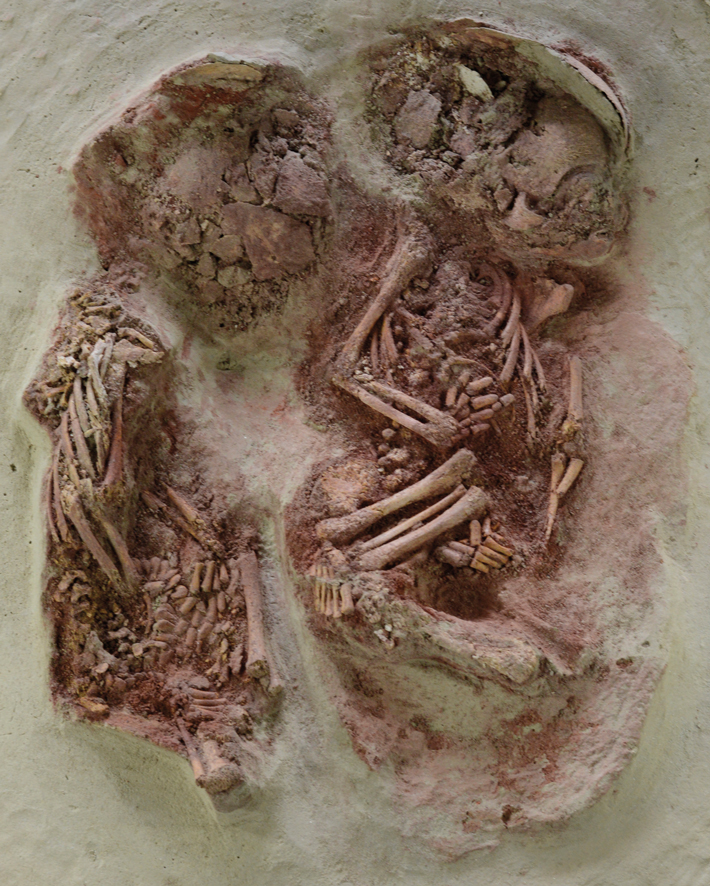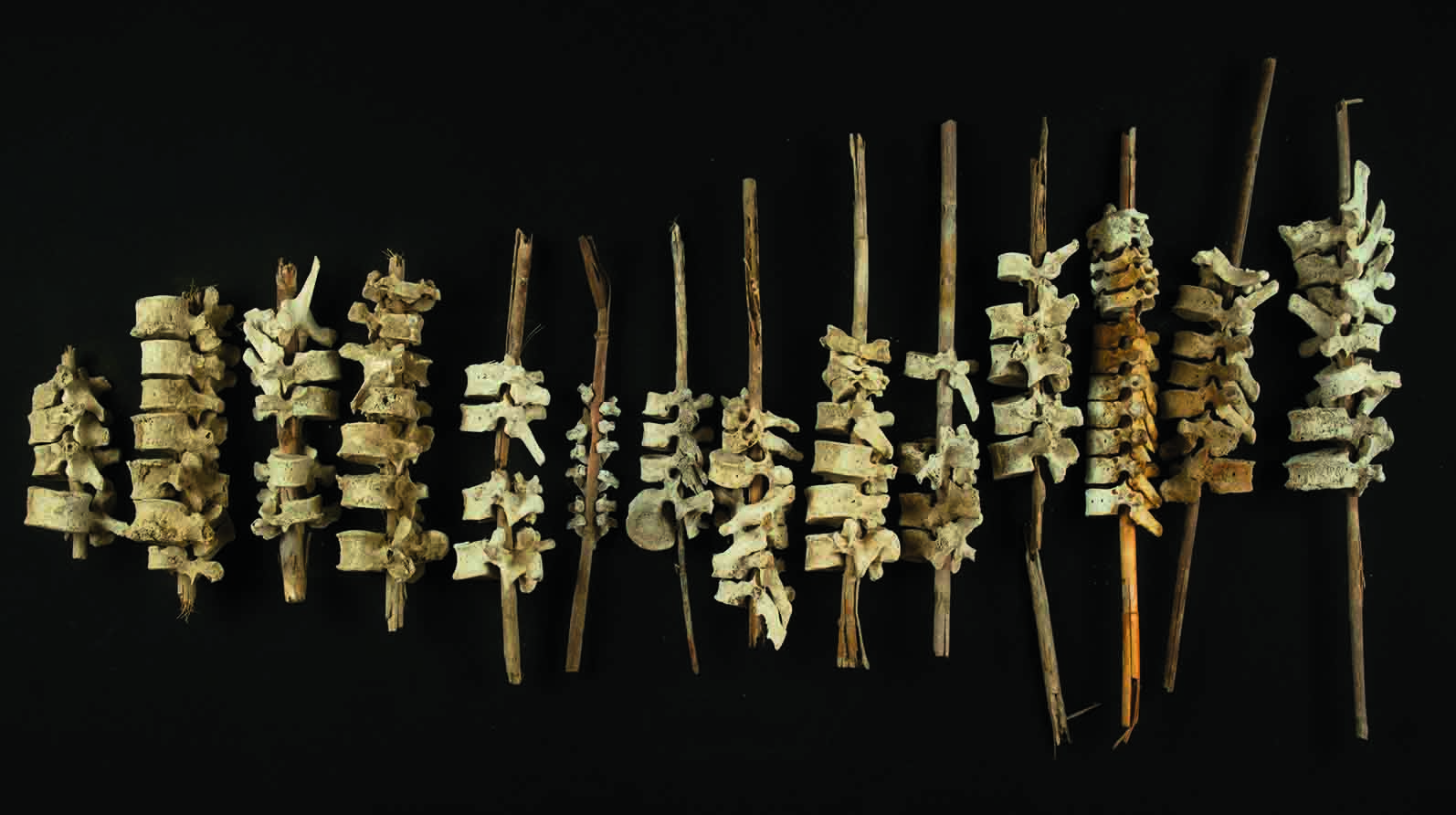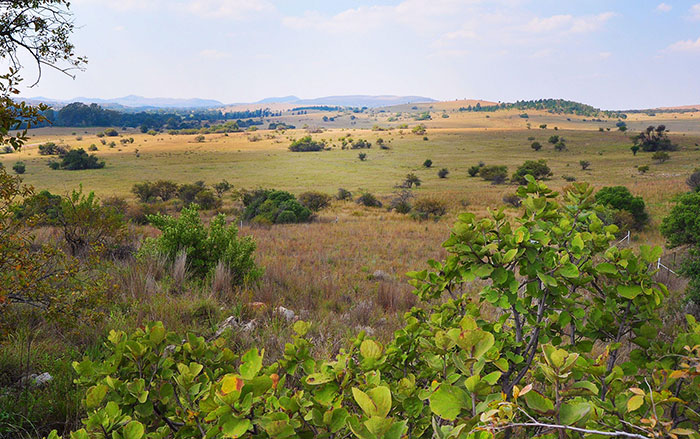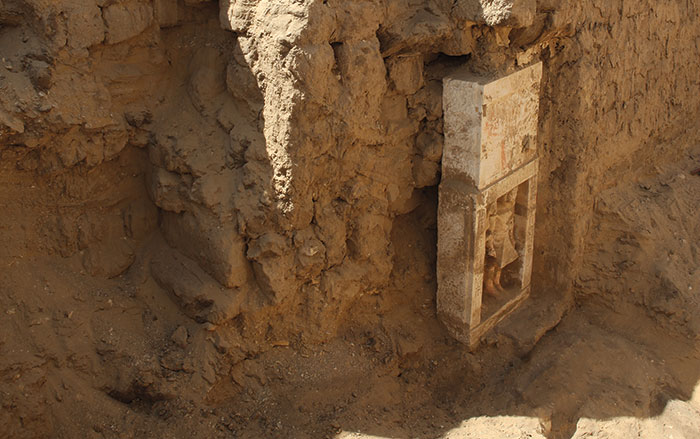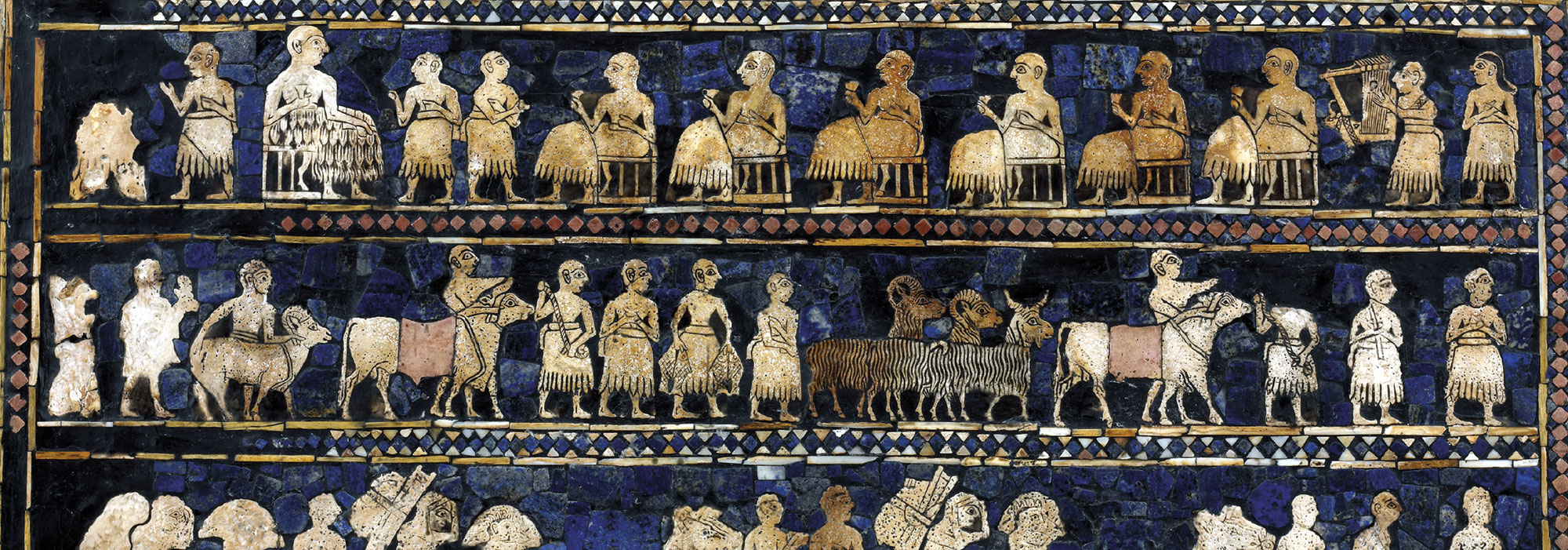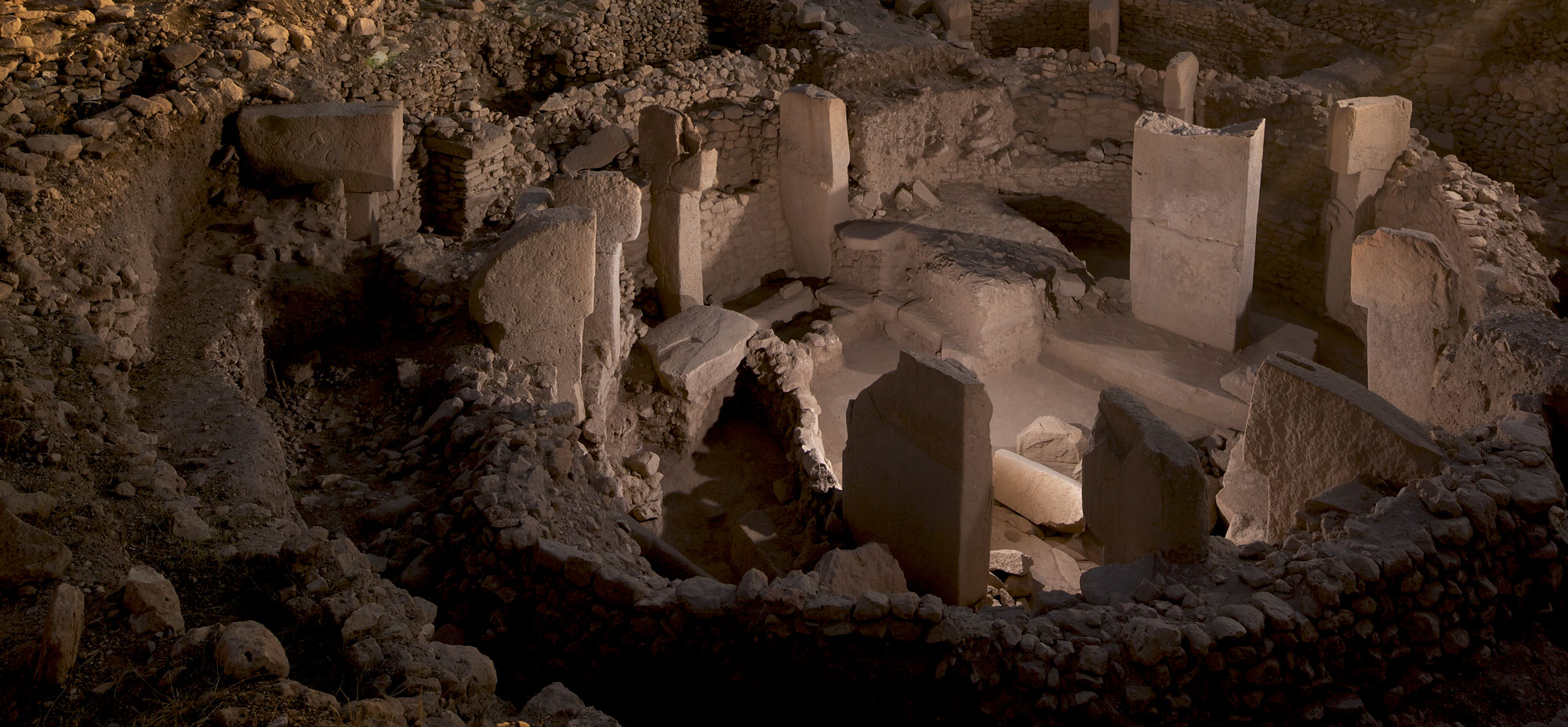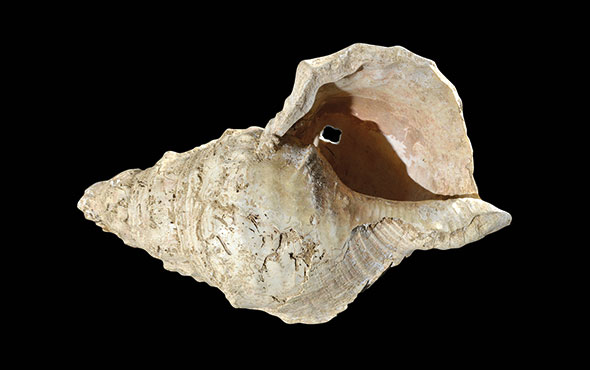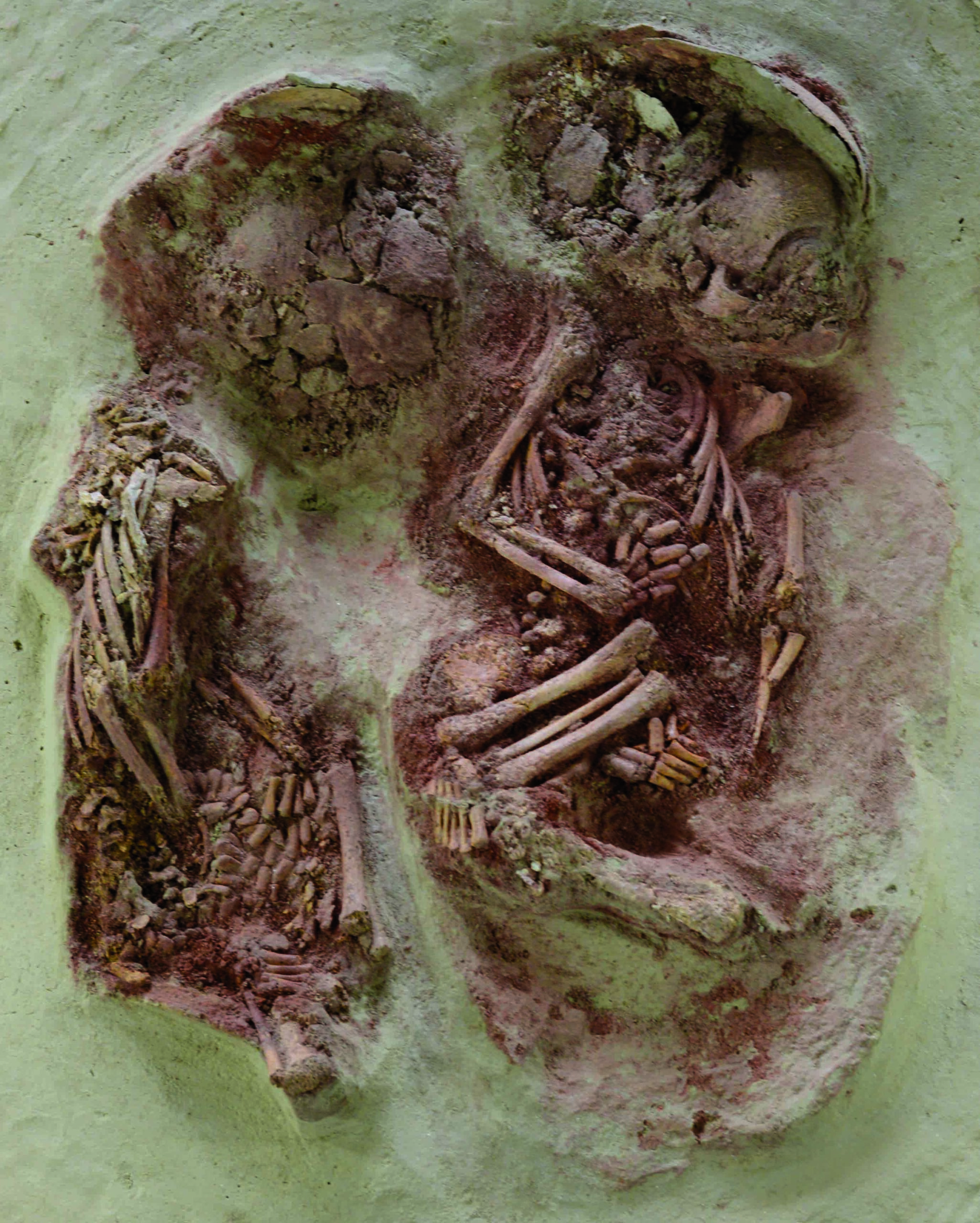
Using new DNA analysis and radiocarbon dating, researchers have determined that a pair of baby boys unearthed at the site of Krems-Wachtberg in northeastern Austria are the earliest known identical twins. The Upper Paleolithic remains were buried for about 31,000 years, until 2005, when archaeologists removed them from the site in a block for further study.
The twins’ bodies were coated in red ochre, a common feature of burials in the area at the time, and placed under the shoulder blade of a mammoth, which helped preserve them. Maria Teschler-Nicola, an anthropologist with the Natural History Museum Vienna, and her colleagues determined that one of the twin boys likely died right after birth and was quickly buried under the mammoth bone. The other boy survived for about six weeks, at which time the grave appears to have been reopened so he could be buried along with his brother. It’s unclear how the twins died, but Teschler-Nicola speculates it might have been the result of nutritional deficiencies.


